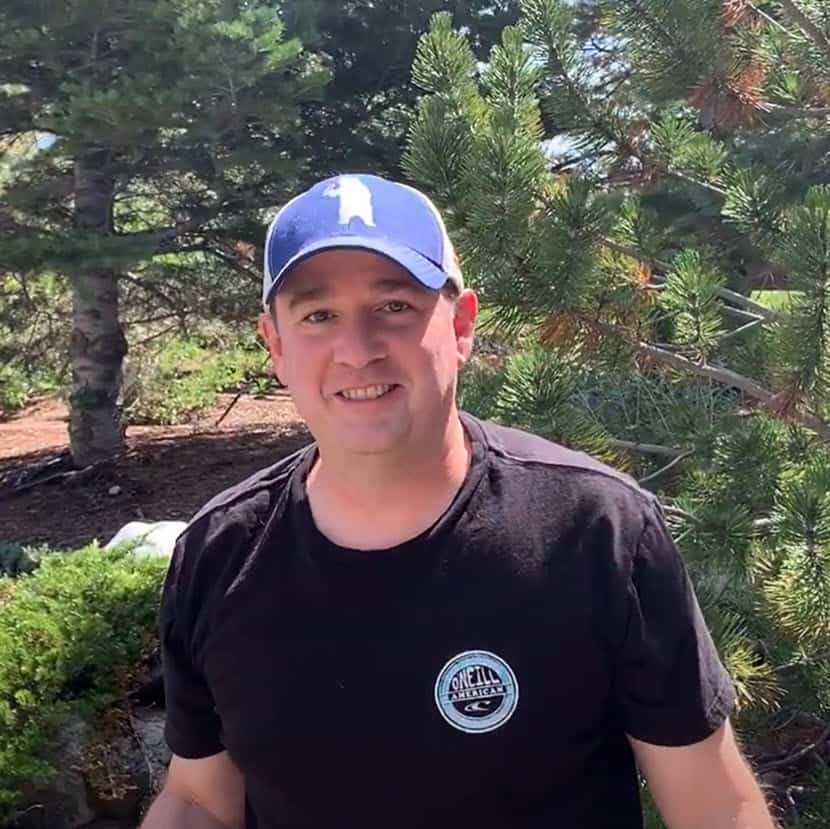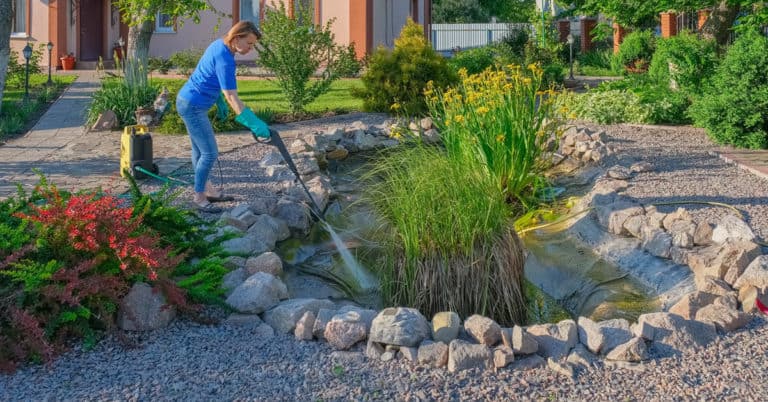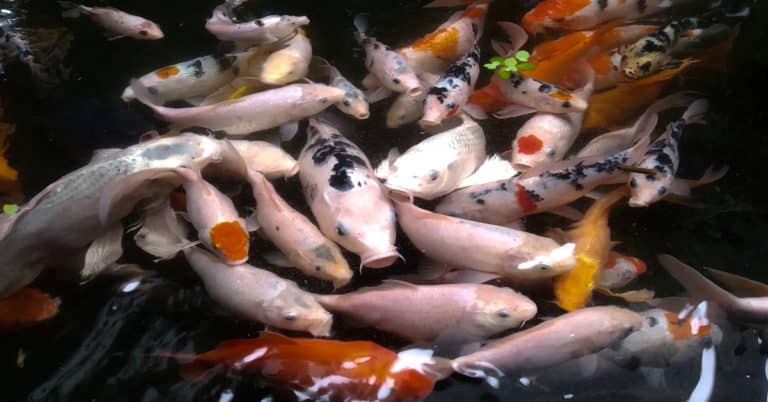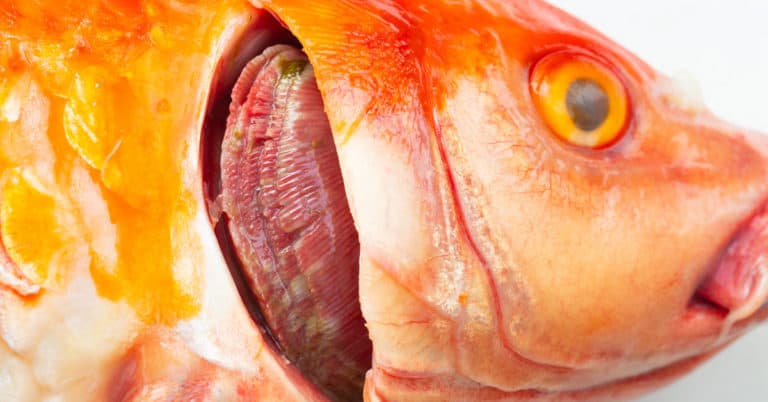Bringing home your first fish or introducing new freshwater fish to an established tank or pond is always an exciting time. However, if you haven’t researched fish care, you might soon notice that Nemo’s orange color suddenly looks dull or that Dorothy is acting lethargic.
According to the Environmental Protection Agency, ammonia poisoning is one of the leading causes of death in fish. Despite what you believe is good care, high ammonia levels can still crop up in your tank.
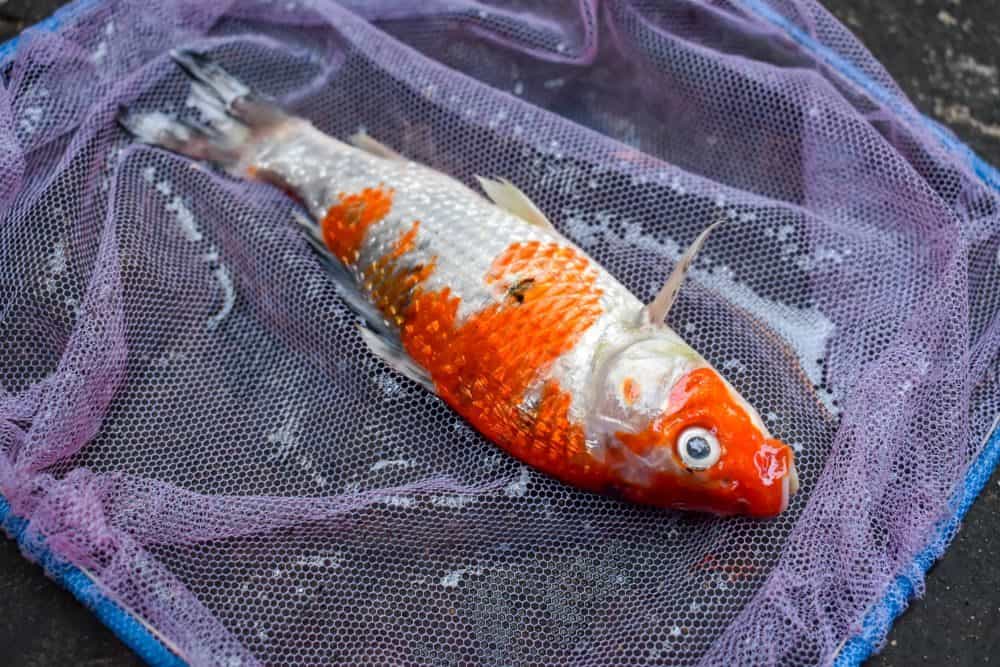
I can tell you from experience that you can prevent ammonia poisoning in fish. Furthermore, ammonia poisoning doesn’t have to be a death sentence if you catch it quickly.
In this guide, I’ll give you an overview of what causes ammonia poisoning, the symptoms to watch out for, how to treat it, and what to do to ensure high ammonia levels don’t make their way to your tank again.
Ammonia is a naturally occurring gas that contains nitrogen and hydrogen. In fact, ammonia is so common that eliminating it in your fish tank is impossible. When a fish’s body breaks down protein, one of its by-products is ammonia. The fish then secretes this ammonia into the tank when it urinates and breathes through its gills.
As a result, your aquarium tank’s pH level becomes off-balanced, and it disrupts the nitrogen cycle that’s critical for your fish’s health.
You might be wondering-do fish experience ammonia poisoning in the wild? Not usually.
You see, in nature, there’s enough movement of new water and rainwater to keep ammonia levels low. However, there’s no place for an increasingly high ammonia concentration to escape in a fish tank.
Ammonia poisoning is dangerous for fish and often leads to death. A study on the impact of high ammonia levels in rockfish also showed that it causes a decrease in growth performance, causes immune suppression, and erodes tissues.
The good news is that it’s possible to undo the damage of ammonia poisoning if you notice the symptoms early enough.
Ammonia poisoning is one of the most common diseases for fish in captivity. Therefore, it’s important you know what to look for. Signs of ammonia poisoning in fish include:
If these symptoms of ammonia poisoning in fish sound a bit like illnesses you read about on the internet with opposite signs potentially pointing to the same disease, I understand your frustration. Luckily, a nearly sure-fire way to determine if your fish’s illness is due to ammonia poisoning is by doing a quick check for elevated ammonia levels. I’ll cover how to do so shortly.
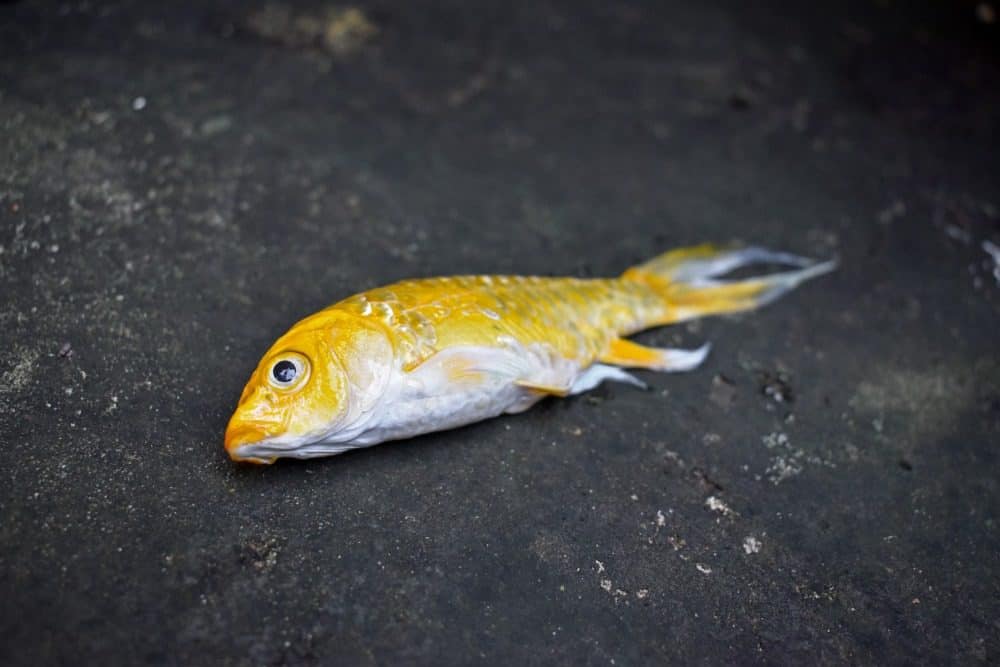
For now, I want to introduce you to the term “ammonia burn.” Ammonia burn is a classic symptom of high ammonia concentrations in fish tanks. The chemical leaves stains on a fish’s skin.
Ammonia burn happens around the gills, fins, and even the eyes. The longer your fish lives in water with high ammonia, the more ammonia burn will travel across its scales.
When it comes to having fish in captivity, there are moments during the captivity process when ammonia poisoning is especially hard to avoid. Ammonia poisoning primarily occurs when you purchase your fish and take them home.
The small bags that pet stores put your fish in make them easy to transfer. However, that small amount of water means that ammonia can quickly build up.
So, if you’re driving long distances to pick up the fish of your dreams, consider bringing a larger bag or tank so that the ammonia has more space to disperse.
Another factor to consider is the necessary acclimation period. When you bring your fish home, you should set the bag in your tank to let the fish gradually adapt to the tank’s temperature. However, it’s critical to monitor your fish carefully for the signs we discussed here to ensure ammonia poisoning doesn’t start to set in.
Finally, regardless of whether you’re bringing your fish home in a fish bag or have had your fish for a while, it’s important to know that ammonia poisoning can settle in at different speeds. In some cases, the symptoms may occur slowly. In other cases, they could happen overnight.
A quick trip to your local pet store will reveal many fish tank testing tools. Some come in a strip test form, where you dunk a piece of paper into the water, and it shows the ammonia levels. Alternatively, you can purchase an ammonia alert sensor.
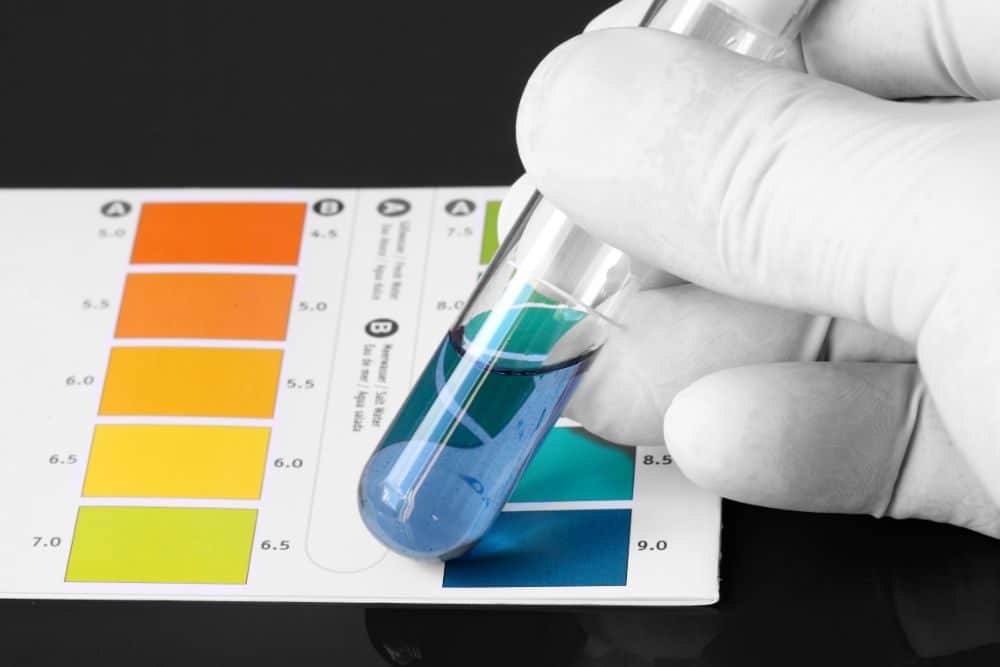
In either case, you want the test to reveal an ammonia concentration of zero parts per million (ppm). Anything higher than zero opens the opportunity for your fish to begin displaying ammonia poisoning symptoms.
In fact, a test that reads a mere two ppm ammonia concentration often signifies that your fish are suffering from severe poisoning.
Here’s some good news-ammonia poisoning doesn’t have to equate to a tank full of dead fish.
If you notice your fish beginning to look sickly and you check the ammonia level of your tank to confirm that this is the problem, you can rectify it before your fish suffers too much.
There are several tactics you can use to help your fish overcome toxic ammonia poisoning. Nevertheless, if your fish display severe symptoms, there’s a high chance you’ll lose them.
If you’ve confirmed the ammonia levels in your tank are higher than 0 ppm, time is of the essence. Below are some of the best remedies for ammonia toxicity.
Ammonia increases water’s pH level. Therefore, one of the most effective ways for providing near-immediate relief for your fish is by reducing the tank’s pH.
Under most circumstances, you should aim to keep your tank water within a pH of 6.8 - 7.6. That said, the Florida Department of Agriculture and Consumer Services cautions that certain fish species have a preferred pH that can be above or below this range.
There are several chemical pH products on the market that are effective at combating a high pH due to ammonia.
Water changes are one of the best ways to prevent ammonia poisoning, but it’s also one of the most important ways to combat it once the total ammonia level of your tank is already high.
So, I recommend changing out about half the water in your tank. That’s more than the typical tank change. However, desperate times call for desperate measures-just as long as you’re not too desperate. You want to make sure the new water you add is the same temperature as the remaining tank water.
Otherwise, you could shock your fish and cause them even more health issues.
I know it sounds cruel, but putting a pause on feeding your fish is necessary if your tank has a severe ammonia problem. The reason is the food will create more organic material in the water, which feeds ammonia.
If it’s any consolation, your fish likely won’t have a big appetite, so they may not miss their food for a couple of days.
That said, if the ammonia levels in your tank aren’t too high and your fish display only mild symptoms, it’s okay to continue feeding them. However, you should reduce the amount you give them to prevent extra organic matter in the water.
There’s no need to be a fish owner in fear-there are many ways you can prevent ammonia poisoning. Below are my tried and trusted strategies.
I recommend changing out about one-quarter of the tap water in your fish tank every two weeks. That way, you physically remove a portion of the ammonia from the tank and fish waste that breeds ammonia. Remember, the new water must be the same temperature as your fish’s current water.
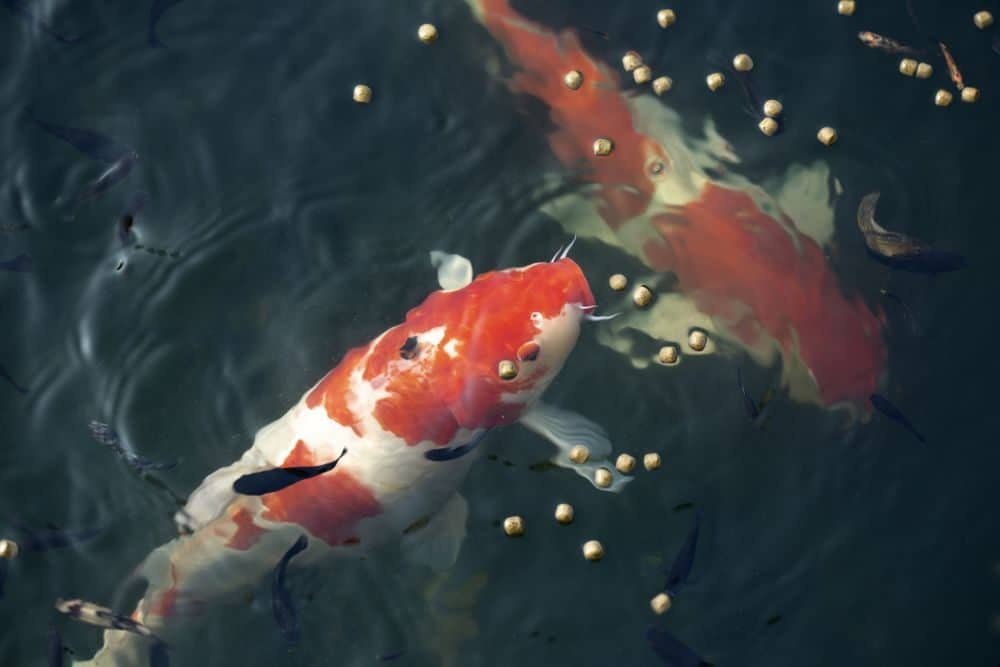
I understand the temptation of wanting to shower your fish with love by giving them more food than they can eat. However, not only is this unhealthy for them, but it will encourage ammonia to accumulate.
It may sound like a strange thing to do, but there are beneficial bacteria in established tanks that will help balance the unionized and ionized ammonia of new tanks. So, ask someone with a fish tank for a bit of their gravel. Lay this gravel at the bottom of your tank, and put a thick layer of your chosen sediment over it. Voila! You’ve kickstarted a healthy nitrogen cycle.
The more fish your tank has, the higher the ammonia concentration. So, if you suspect that you have too many fish for your tank, I recommend changing 25% of the water even more frequently to prevent ammonia poisoning.
By taking the steps outlined in this article, you should be able to keep your koi fish healthy.
Check in with your fish frequently.
Are they behaving normally? Are they changing color? Are they eating less and looking lethargic? If any of these apply, you may have a problem with ammonia that you need to address.
Don't Overfeed / Overstock
Too many fish in your pond or fish tank can result in excess levels of ammonia. Excess feeding - and food that goes uneaten can also add to the problem.
Monitor Water Levels
Frequently test your water and change out water when needed. Add good bacteria when needed and make sure the ph level stays within acceptable parameters.
